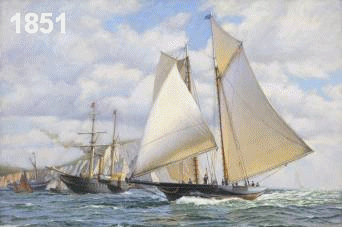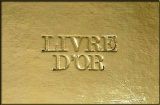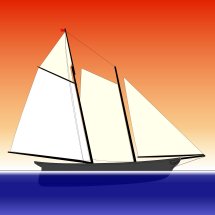 AMERICA'S CUP
AMERICA'S CUP1851-1937
"If we can fly today in the San Francisco Bay, this is because there have been "adventurers" like Walter Greene and Mike Birch.
To understand the future, we must know and respect the past."
Loïck PEYRON (Voiles et Voiliers July 2014)
![]()










 WEDNESDAY, JULY 21, 1920
WEDNESDAY, JULY 21, 1920








 Dick Brown was a New York and Sandy Hook pilot who sailed the schooner-yacht AMERICA to England in the summer of 1851, and was at her helm when she successfully raced for the trophy that was to become known as the America's Cup.
Dick Brown was a New York and Sandy Hook pilot who sailed the schooner-yacht AMERICA to England in the summer of 1851, and was at her helm when she successfully raced for the trophy that was to become known as the America's Cup. A Delaware artist, Scott Cameron paints the simple elegance of the America's Cup races, serene coastal marsh scenes, timeless landscape vistas and historic steamboats in a style reminiscent of the era in which they reigned.
A Delaware artist, Scott Cameron paints the simple elegance of the America's Cup races, serene coastal marsh scenes, timeless landscape vistas and historic steamboats in a style reminiscent of the era in which they reigned. Colin M Baxter is a professional marine artist who works in a studio/gallery at Royal Clarence Yard, (aka Royal Clarence Marina) Gosport, Hampshire.
Colin M Baxter is a professional marine artist who works in a studio/gallery at Royal Clarence Yard, (aka Royal Clarence Marina) Gosport, Hampshire.

